Womens World Cup Soccer
The women’s soccer world cup isn’t just a tale of a tournament…
It’s a saga of grit, glory and groundbreaking achievements that have not only redefined women’s soccer but also reshaped the sporting landscape globally.
They’re about making history, challenging stereotypes, and inspiring millions. That’s the essence of the Women’s World Cup – a spectacle that transcends the boundaries of sport.
Since its inception in 1991, the Women’s World Cup has evolved from a modest beginning to become a global phenomenon.
It’s a story of how a sporting event can become a beacon of empowerment and a celebration of excellence.
As we delve into this narrative, we’ll uncover the early struggles, the landmark moments, and the incredible journey of women’s soccer from the sidelines to the center stage of the world.
But why does this matter?
…because the Women’s World Cup is more than just a tournament.
It’s a powerful platform that has challenged norms, altered perceptions, and given women athletes the recognition they deserve.
It’s a testament to the relentless spirit of countless women who have battled on and off the field to carve out a space for themselves in the world of sports.
The Genesis of the Women’s World Cup
To truly appreciate the magnitude of what the Women’s World Cup has become today, we need to turn the pages back to its humble, yet groundbreaking beginnings.
Early Days of Women’s Soccer
Women’s soccer…
…believe it or not.
It has roots that stretch back over a century.
However, for decades, it remained in the shadows, often frowned upon and even outright banned in countries like England, which ironically is the birthplace of modern soccer.
Despite these hurdles, women’s soccer persisted, driven by passionate players and supporters who believed in the sport’s potential.
Path to the First Official Tournament in 1991
Fast forward to the late 20th century, the idea of an official Women’s World Cup began to gain traction.
Pioneering figures in women’s soccer from various countries started pushing for a global tournament akin to the men’s World Cup.
Their efforts culminated in the staging of unofficial tournaments, which demonstrated not only the high level of play but also the public’s growing interest in women’s soccer.
The real breakthrough came when FIFA, the international governing body of soccer, finally recognized the need and potential for a Women’s World Cup.
The inaugural tournament was set for 1991 in China, a decision that marked a significant milestone in the history of women’s sports.
It was a moment of validation for all those who had fought for women’s soccer’s recognition on the global stage.
Key Figures and Organizations in Establishing the World Cup
Behind this monumental achievement were key figures and organizations who played crucial roles.
From pioneering players who became role models to administrators who fought for equal opportunities, these individuals laid the groundwork for what would become a major international sporting event.
Organizations like FIFA and various national soccer associations had to be convinced of the viability and potential success of the tournament. Their eventual support was instrumental in launching the Women’s World Cup.
The 1991 tournament, though modest compared to today’s standards, was a resounding success.
It shattered many preconceived notions about women’s soccer and laid the foundation for future growth.
The quality of play, the competitive spirit, and the sheer joy of the players and fans alike were infectious.
It was clear that the Women’s World Cup was not just a one-time event but a burgeoning global phenomenon.
The genesis of the Women’s World Cup is a testament to the power of perseverance and vision.
It stands as a shining example of how passion for the sport transcended gender barriers and laid the foundation for what would become a celebration of excellence in women’s soccer.
From these modest beginnings, the Women’s World Cup has grown into a tournament that captivates millions worldwide, a true testament to the enduring spirit of the beautiful game.

The Evolution of the Tournament
This evolution is not just in terms of scale and global reach but also in the quality of play, the strategies employed, and the overall stature of the event.
Expansion in Team Numbers and Global Reach
Initially, the 1991 World Cup featured 12 teams, a number that reflected FIFA’s cautious optimism about the tournament’s success.
However, the overwhelming response and growing interest in women’s soccer led to a gradual increase in the number of participating teams.
By 2015, the tournament expanded to 24 teams, a clear indicator of the sport’s ongoing popularity. This expansion wasn’t just about numbers; it was a nod to the increasing talent pool and the global spread of women’s soccer, with teams from all continents showcasing their skills on the world stage.
Technological and Tactical Developments in Women’s Soccer
Over the years, the Women’s World Cup has been a witness to significant advancements in soccer technology and tactics.
From the introduction of goal-line technology to the use of Video Assistant Referees (VAR), these technological tools have enhanced the fairness and excitement of the game.
Tactically, the tournament has seen a shift from the early days of raw talent and physicality to sophisticated strategies.
Teams now boast specialized coaching staff, sports scientists, and data analysts, all contributing to a more nuanced and strategic approach to the game.
Impact of Media Coverage and Sponsorship
The evolution of the Women’s World Cup is also mirrored in the changing landscape of media coverage and sponsorship.
Initially struggling for airtime and sponsors, the tournament has seen a dramatic shift in recent years.
The 2019 World Cup broke viewing records, with over a billion viewers tuning in, reflecting a growing global interest in women’s soccer.
This surge in viewership has attracted significant sponsorships, bringing in much-needed investment to the sport. The increased media coverage and financial backing have not only improved the quality of the tournament but also enhanced the profile of women’s soccer worldwide.
As we reflect on the evolution of the Women’s World Cup, it’s evident that the tournament has grown in leaps and bounds.
It’s a growth that mirrors the resilience and determination of the countless women who have fought for their rightful place in the world of soccer.
From its modest beginnings to its current status as a premier sporting event, the Women’s World Cup stands as a beacon of progress, a testament to the unyielding spirit of the beautiful game.
In the next sections, we’ll delve into the iconic tournaments and matches that have defined this glorious journey, celebrate the legendary players and coaches who have graced the tournament, and explore the socio-cultural impact of this phenomenal event.
The story of the Women’s World Cup is far from just a sporting narrative; it’s a tale of breaking barriers, setting new standards, and inspiring generations.
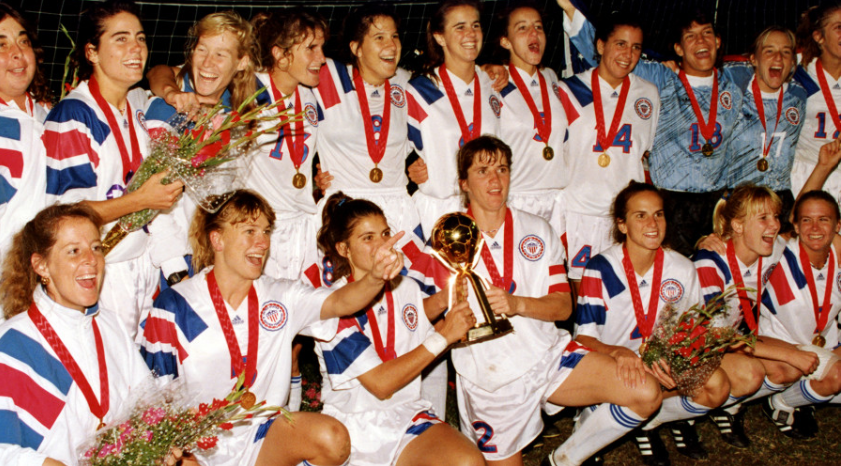
Iconic Tournaments & Matches
As we delve deeper into the heart of the Women’s World Cup, it’s time to relive some of the most iconic tournaments and matches that have left an indelible mark on the history of the sport.
These moments are not just highlights of athletic excellence but also milestones in the journey of women’s soccer.
Overview of Each Tournament (1991 – 2023)
1991, China: The inaugural tournament set the stage, with the United States clinching the first-ever title. This event was a revelation, showcasing the untapped potential of women’s soccer on a global scale.
Top 3 finishes
United States
Norway
Sweden
1995, Sweden: This tournament saw the rise of Norway as a powerhouse, who clinched the title, signaling the start of a more competitive landscape in women’s soccer.
Top 3 finishes
Norway
Germany
United States
1999, United States: Often remembered for the iconic image of Brandi Chastain’s celebration, this tournament was a cultural phenomenon, significantly raising the profile of women’s soccer worldwide.
Top 3 finishes
United States
China
Brazil
2003, United States: Moved from China due to the SARS outbreak, this tournament was marked by Germany’s dominance, showcasing tactical and technical advancements in the game.
Top 3 finishes
Germany
Sweden
United States
2007, China: A tournament of surprises, with Brazil’s Marta announcing herself on the world stage and Germany defending their title without conceding a single goal.
Top 3 finishes
Germany
Brazil
United States
2011, Germany: Japan’s emotional victory, in the backdrop of the devastating earthquake and tsunami, was a testament to the spirit of resilience and the unifying power of soccer.
Top 3 finishes
Japan
United States
Sweden
2015, Canada: The expansion to 24 teams brought more diversity and competition, with the USA winning their third title in a thrilling tournament.
Top 3 finishes
United States
Japan
England
2019, France: A landmark event in terms of global viewership and media attention, this tournament, won by the USA, set new standards for women’s sports.
Top 3 finishes
United States
Netherlands
Sweden
2023, Australia- New Zealand: This tournament was the first to feature an expanded format of 32 teams from the previous 24, replicating the format used for the men’s World Cup from 1998 to 2022. Spain were crowned champions after defeating reigning European champions England 1–0 in the final.
Top 3 finishes
Spain
England
Sweden (with Australia finishing fourth)
Memorable Matches & their Significance
USA vs. China, 1999 Final: The penalty shootout victory for the USA, highlighted by Chastain’s iconic celebration, became a defining moment for women’s sports.
Germany vs. Sweden, 2003 Final: A showcase of tactical brilliance, with Germany’s 2-1 victory in extra time, highlighting the growing technical prowess in the women’s game.
USA vs. Brazil, 2011 Quarterfinal: A dramatic comeback by the USA, capped by Abby Wambach’s last-minute equalizer, exemplified the never-say-die spirit of the tournament.
Japan vs. USA, 2011 Final: A match that went beyond soccer, symbolizing hope and resilience, with Japan’s victory serving as an emotional lift for a nation in distress.
Netherlands vs. Sweden, 2019 Semifinal: A showcase of the rising European influence in women’s soccer, with the Netherlands reaching their first-ever final.
Australia vs. France: The Matildas were denied once. Then they were denied again. And then finally – finally – at the third opportunity to win it, and the 20th spot kick of the longest penalty shootout in FIFA Women’s World Cup history, Australia made it into the semi-finals for the first time ever.
https://youtu.be/krdT7n98NWA?si=QVRThawT0P_-bKsU
Evolution of Playing Styles and Strategies
Over the years, the Women’s World Cup has been a stage for the evolution of playing styles and strategies.
From the early dominance of physical and direct play to the more recent emphasis on technical skills, tactical flexibility, and high-pressing games, the tournament has mirrored the broader developments in soccer.
Teams like Japan have been lauded for their technical proficiency and team-oriented play, while the USA’s blend of athleticism and skill has set a benchmark in the sport.
The iconic tournaments and matches of the Women’s World Cup are more than just memories; they are chapters in a continuing story of progress, challenge, and triumph.
They reflect the changing face of women’s soccer, the breaking of old stereotypes, and the emergence of new paradigms.
The Women’s World Cup has not only been a showcase of the highest level of women’s soccer but also a catalyst for change in the sport.
Each tournament has contributed to elevating the status of women’s soccer, challenging the norms, and inspiring a new generation of players and fans.
The evolution of playing styles and strategies reflects a deeper understanding and respect for the women’s game, acknowledging its uniqueness and value in the world of sports.
As we celebrate these iconic tournaments and matches, we also recognize the broader impact they have had. They have not just been about winning or losing; they have been about breaking barriers, setting new standards, and pushing the boundaries of what is possible.
They have been a testament to the skill, dedication, and passion of women soccer players around the world.
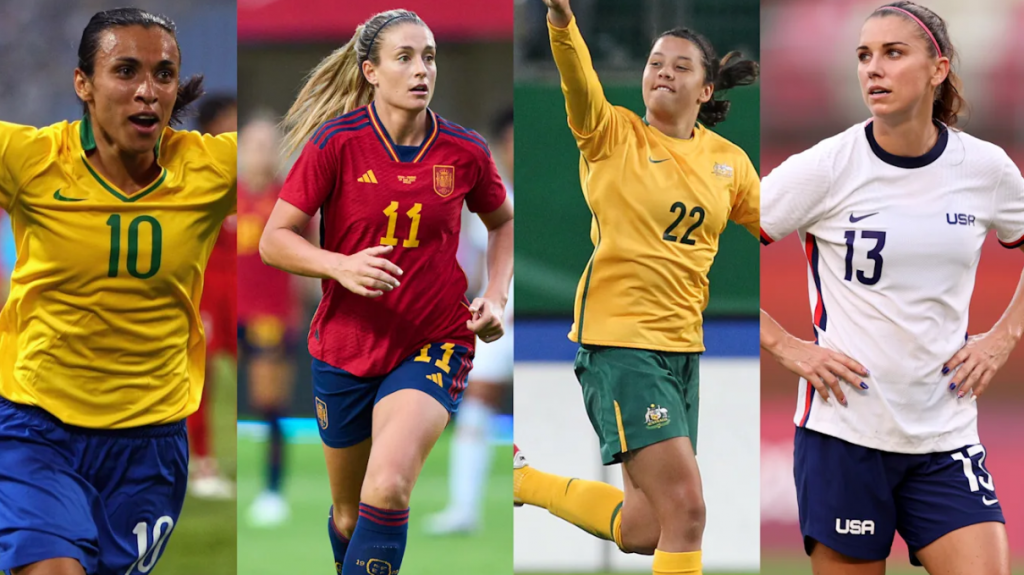
Legendary Players and Coaches
The Women’s World Cup has not only been a stage for the world’s best teams but also a platform for individual brilliance.
Over the years, legendary players and coaches have left an indelible mark on the tournament, inspiring millions with their skill, leadership, and innovation.
Profiles of Iconic Players from Various Eras
Marta (Brazil): Often referred to as “The Queen of Football,” Marta’s skill, flair, and scoring prowess have made her one of the greatest female footballers of all time. Her impact on the game transcends her goal-scoring records, inspiring a generation of young girls in Brazil and beyond.
Mia Hamm (USA): A key figure in popularizing women’s soccer in the United States, Mia Hamm’s legacy includes not only her incredible goal-scoring and playmaking abilities but also her role in inspiring a cultural shift towards women’s sports in the USA.
Birgit Prinz (Germany): A dominant force in German football, Prinz’s physicality, technical skills, and goal-scoring ability were pivotal in Germany’s World Cup successes in the early 2000s.
Homare Sawa (Japan): Instrumental in Japan’s 2011 World Cup victory, Sawa’s leadership and exceptional playmaking abilities epitomize the technical finesse and tactical intelligence of Japanese women’s soccer.
Sam Kerr (Australia): Sam Kerr, the Australian striking sensation, has redefined forward play in women’s soccer with her extraordinary goal-scoring ability and captivating athleticism. As the talismanic leader of the Matildas and a record-setter in both the NWSL and W-League, Kerr’s impact transcends borders, inspiring a new generation of players with her skill, determination, and passion for the game.
Influential Coaches and Their Tactics
Jill Ellis (USA): Leading the USA to two World Cup victories in 2015 and 2019, Ellis is known for her tactical acumen, ability to manage big personalities, and her emphasis on a versatile, attacking style of play.
Silvia Neid (Germany): A former player turned coach, Neid guided Germany to World Cup glory in 2007. Her coaching style, characterized by a blend of tactical discipline and promoting young talent, has had a lasting impact on German women’s soccer.
Pia Sundhage (Sweden/USA): Renowned for her leadership and motivational skills, Sundhage led the USA to Olympic gold and later took the helm of her native Sweden, instilling a strong tactical approach and a positive team culture.
Impact of These Individuals on Women’s Soccer
The influence of these legendary players and coaches extends far beyond the trophies and accolades.
They have been instrumental in raising the profile of women’s soccer, breaking down gender barriers in sports, and setting new standards for future generations.
Players like Marta and Mia Hamm have become household names, symbolizing the fight for equality and recognition in sports.
Coaches like Jill Ellis and Silvia Neid have not only crafted championship teams but also contributed to the evolution of coaching in women’s soccer.
Their stories are a mix of personal triumph and collective progress.
They have faced challenges, from societal prejudices to unequal playing conditions, and have emerged as icons of the sport.
Their legacy is evident in the growing popularity of women’s soccer, the increasing professionalisation of the sport, and the rising number of young girls taking up soccer around the world.
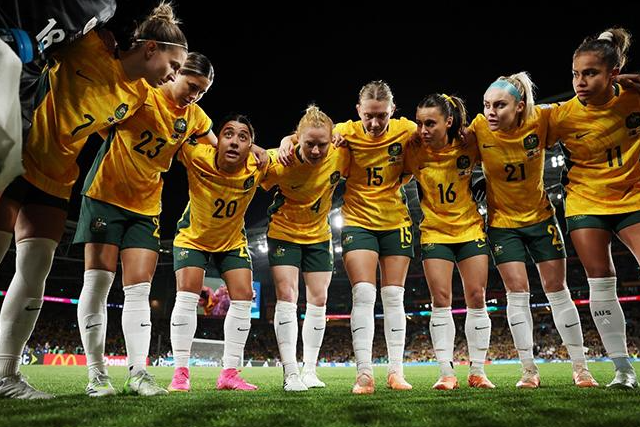
Socio-Cultural Impact
The Women’s World Cup is far more than a showcase of elite soccer; it’s a powerful catalyst for socio-cultural change.
This tournament has not only highlighted exceptional athletic prowess but has also played a pivotal role in shaping societal attitudes towards women in sports and beyond.
Women’s World Cup and Women’s Rights
Platform for Advocacy: The Women’s World Cup has become a global stage for advocating gender equality and women’s rights. The visibility and success of the tournament have empowered players and fans alike to speak out on issues such as equal pay, better playing conditions, and more significant investment in women’s sports.
Breaking Stereotypes: By showcasing the high level of competition and skill, the tournament challenges long-standing gender stereotypes about women’s capabilities in sports. It underscores the message that athletic excellence is not confined to one gender.
Role in Promoting Gender Equality in Sports
Inspiring Policy Changes: The success and popularity of the Women’s World Cup have pressured sporting bodies and governments to reconsider their policies regarding women’s sports. This has led to increased funding, better training facilities, and more opportunities for women in soccer and other sports.
Equal Pay and Recognition: The conversation around the Women’s World Cup has been central to the broader dialogue on equal pay for women athletes. High-profile cases, like the US Women’s National Team’s lawsuit for equal pay, have gained international attention, highlighting the disparities and advocating for change.
Influence on Young Girls and Women’s Soccer Participation Globally
Growing Participation: The visibility of the Women’s World Cup has inspired countless young girls to take up soccer, leading to a surge in participation rates worldwide. Role models like Marta, Megan Rapinoe, and Sam Kerr have become household names, encouraging girls to dream big and pursue sports.
Development of Grassroots Programs: The tournament’s popularity has also led to the development of more grassroots programs aimed at nurturing young female talent. These programs not only focus on developing soccer skills but also on building confidence, teamwork, and leadership among young women.
Cultural Shift and Media Representation
Changing Media Landscape: The Women’s World Cup has significantly altered how women’s sports are represented in the media. Increased coverage, more in-depth analysis, and greater social media presence have helped in normalizing women’s sports in mainstream media.
Celebration of Diversity: The tournament is a celebration of cultural diversity, bringing together teams from across the globe. It provides a platform for different narratives and backgrounds, enriching the global soccer community and fostering a spirit of international camaraderie.
The socio-cultural impact of the Women’s World Cup is profound and far-reaching.
It has not only elevated women’s soccer but has also sparked important conversations about gender equality in sports and society.
The tournament stands as a beacon of progress, challenging norms, inspiring change, and empowering women and girls worldwide. As we look towards the future, the Women’s World Cup will undoubtedly continue to play a crucial role in shaping the socio-cultural landscape of sports.
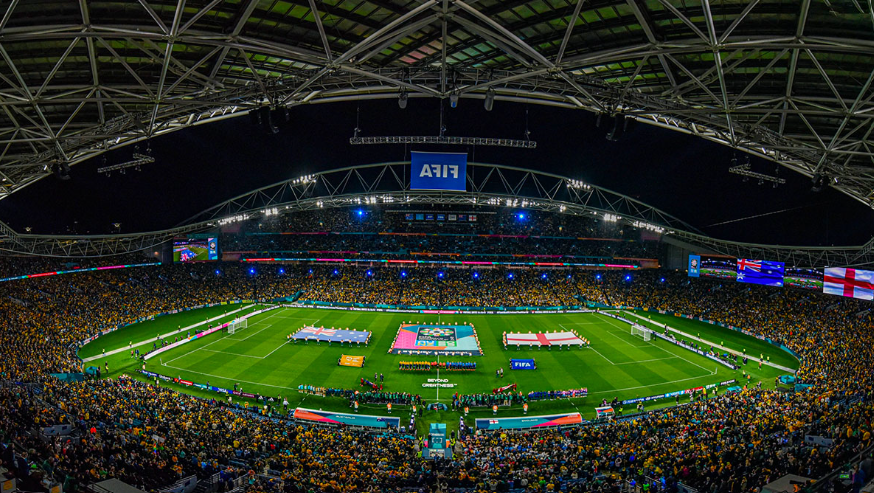
The World Cup and Its Global Economic Impact
The tournament’s growing popularity has led to a noticeable impact on various economic sectors, highlighting the potential of women’s sports as a marketable and profitable entity.
Economic Benefits to Host Nations
Boost in Tourism: Host countries experience a surge in tourism, with fans from around the world traveling to watch the games. This influx of visitors benefits hotels, restaurants, and local businesses, contributing significantly to the local economy.
Infrastructure Development: Hosting the World Cup often necessitates infrastructure improvements, including stadium upgrades and transportation enhancements. These developments can have long-lasting benefits for the host cities, improving facilities for future sporting events and local communities.
Job Creation: The event’s preparation and execution create numerous temporary jobs, from construction work related to infrastructure projects to positions in event management, hospitality, and security during the tournament.
Sponsorship and Commercial Growth
Attracting Major Sponsors: The increasing viewership and popularity of the Women’s World Cup have attracted major sponsors and partners, keen to associate their brands with the values of excellence and empowerment that the tournament represents.
Growth in Merchandising: Official merchandise sales, including team jerseys, memorabilia, and branded products, see a significant uptick during the World Cup. This not only boosts revenue for organizers and teams but also enhances brand visibility.
Media Rights: The sale of broadcasting rights for the tournament has become a significant source of revenue. With the growing audience, these rights have become increasingly valuable, benefiting both FIFA and participating associations.
The Role of Merchandising and Licensing
Brand Expansion: The World Cup provides a platform for teams and players to expand their brand reach. Player-specific merchandise, particularly for star players, sees high demand, contributing to the players’ personal branding and commercial value.
Licensing Deals: Licensing agreements for video games, collectibles, and other products related to the Women’s World Cup further contribute to the economic impact. These deals not only generate revenue but also help in promoting the tournament and the sport more broadly, reaching new audiences and demographics.
Impact on Women’s Soccer Investment and Professionalisation
Increased Investment in Women’s Leagues: The success of the World Cup has encouraged investment in domestic women’s soccer leagues around the world. This investment is not just financial; it also includes resources for training, facilities, and youth development programs.
Professionalization of the Sport: The economic success of the Women’s World Cup has played a crucial role in the professionalization of women’s soccer. Increased revenues from the tournament have led to better salaries for players, improved contracts, and more professional opportunities within the sport, contributing to its sustainability and growth.
Global Economic Ripple Effects
Influence on Other Women’s Sports: The economic success of the Women’s World Cup has had ripple effects on other women’s sports, setting a precedent for investment and commercial interest. It demonstrates the viability and potential profitability of women’s sports, encouraging broader media coverage and sponsorship.
Long-Term Economic Legacy: The tournament leaves a long-term economic legacy in the host countries. Beyond the immediate influx of tourism and investment, it can lead to sustained interest in soccer, increased participation in sports, and ongoing use of improved facilities, all contributing to the economy in various ways.
The global economic impact of the Women’s World Cup is multifaceted, benefiting host nations, contributing to the growth of the sport, and influencing the broader landscape of women’s sports.
As the tournament continues to grow in popularity and stature, its economic footprint is likely to expand, offering new opportunities and challenges in the world of sports economics.
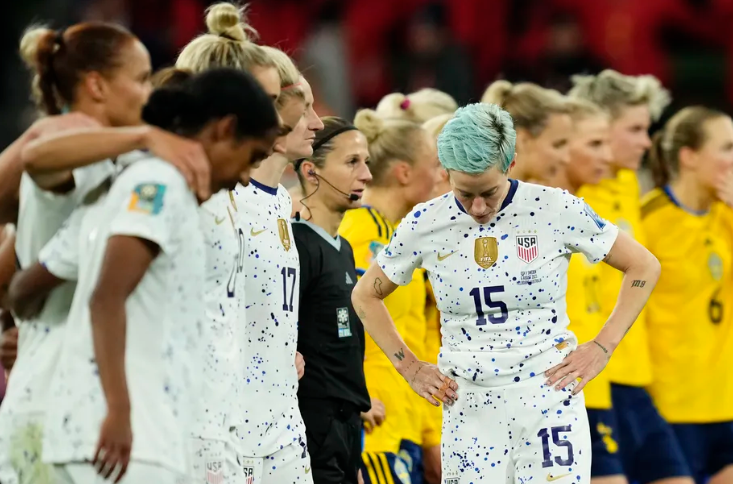
Challenges and Controversies
While the Women’s World Cup has been a beacon of progress and a celebration of women’s soccer, it has not been without its challenges and controversies.
These issues not only reflect the struggles within the sport but also mirror broader societal challenges.
Issues of Equality and Discrimination
Equal Pay: One of the most prominent issues has been the fight for equal pay. The disparity between what male and female players are paid has been a point of contention, highlighted by lawsuits and public protests by teams like the USA Women’s National Team.
Gender Discrimination: Instances of gender discrimination, from inadequate facilities and resources compared to men’s teams to lesser media coverage and marketing, have been ongoing challenges in women’s soccer.
Cultural and Religious Barriers: In certain regions, cultural and religious norms have hindered the growth and acceptance of women’s soccer, limiting participation and support for female athletes.
Controversies Surrounding Hosting and Organizing
Selection of Host Countries: The choice of host countries has sometimes been controversial, with questions raised about human rights records and the treatment of women in those nations.
Infrastructure and Preparedness: Concerns about the adequacy of facilities and infrastructure to host a tournament of such magnitude have also arisen, sometimes leading to criticisms about unequal treatment compared to men’s tournaments.
Doping, Corruption, and Other Challenges
Doping Allegations: Like many international sports, women’s soccer has not been immune to doping scandals, although these have been relatively infrequent.
Corruption and Governance Issues: Allegations of corruption within FIFA and national governing bodies have occasionally overshadowed the tournament, raising questions about the integrity of the sport’s administration.
Match-Fixing and Integrity: Although rare, there have been concerns about match-fixing and the overall integrity of the game, which have led to calls for stricter enforcement and oversight.
Media Representation and Coverage
Stereotyping and Representation: Media coverage of women’s soccer has sometimes been criticized for perpetuating stereotypes or for focusing on the physical appearance of female athletes rather than their athletic prowess.
Inconsistent Coverage: Despite growing interest, women’s soccer still battles for consistent and equitable media coverage, especially when compared to men’s soccer.
Health and Safety Concerns
Concussion and Injury Management: The issue of concussions and the long-term health implications for players have gained attention, leading to calls for better protocols and management.
Harassment and Abuse: Instances of harassment and abuse, both verbal and physical, within women’s soccer have been a disturbing challenge, necessitating stronger measures for protection and accountability.
In addressing these challenges and controversies, the Women’s World Cup and its governing bodies face a complex task.
It’s not just about organising a global sporting event but also about navigating the intricacies of gender equality, cultural sensitivities, and ethical governance.
These issues require ongoing attention and action, not only to preserve the integrity and growth of women’s soccer but also to ensure that the sport continues to be a positive force for social change.
The journey of the Women’s World Cup is reflective of the broader struggle for equality and respect in sports and society.
Each challenge and controversy presents an opportunity for dialogue, learning, and improvement.
As the tournament evolves, it carries with it the responsibility to address these issues head-on, setting an example not just for women’s sports, but for all sports, in promoting fairness, inclusivity, and integrity.
The future of the Women’s World Cup, therefore, is not just about celebrating athletic achievements but also about continuing to break down barriers, challenge stereotypes, and advocate for change. By confronting these challenges and controversies, the tournament can continue to be a powerful platform for empowerment and a catalyst for positive transformation in the world of sports and beyond.

Final Thoughts
As we reflect on the rich tapestry of the Women’s World Cup, it’s clear that this tournament is much more than a collection of soccer matches.
It’s a powerful narrative that intertwines sports, culture, and social change, capturing the hearts of millions and inspiring a new generation of athletes and fans.
From the inaugural tournament in 1991 to the global spectacle it has become today, the Women’s World Cup has charted a remarkable journey.
It has witnessed breathtaking moments of athletic brilliance, broken numerous barriers, and challenged and changed societal norms.
The tournament has not only elevated women’s soccer to new heights but has also played a pivotal role in advancing the conversation around gender equality in sports and beyond.
The legacy of the Women’s World Cup is evident in the growing popularity of women’s soccer, the increasing professionalisation of the sport, and the expanding global fan base.
It has become a beacon of inspiration and a testament to the relentless spirit of countless women who have battled on and off the field for recognition, equality, and respect.
As we look to the future, the Women’s World Cup stands poised to continue its evolution, breaking new ground and reaching new audiences.
The challenges and controversies that have accompanied its growth are reminders of the work that still needs to be done in the realms of equality, representation, and governance in sports.
Appendix A: List of World Cup Winners (1991 – 2023)
1991 – United States
Host Country: China
Final Result: United States 2, Norway 1
1995 – Norway
Host Country: Sweden
Final Result: Norway 2, Germany 0
1999 – United States
Host Country: United States
Final Result: United States 0 (5), China 0 (4) [Penalty Shootout]
2003 – Germany
Host Country: United States
Final Result: Germany 2, Sweden 1 (Golden Goal)
2007 – Germany
Host Country: China
Final Result: Germany 2, Brazil 0
2011 – Japan
Host Country: Germany
Final Result: Japan 2 (3), United States 2 (1) [Penalty Shootout]
2015 – United States
Host Country: Canada
Final Result: United States 5, Japan 2
2019 – United States
Host Country: France
Final Result: United States 2, Netherlands 0
2023- Spain
Host Countries: Australia and New Zealand
Final Result: Spain 1, England 0
Appendix B: Notable Records and Statistics
Most World Cup Titles
United States: 4 titles (1991, 1999, 2015, 2019)
Most World Cup Appearances by a Player
Christie Rampone (USA): 5 World Cups (1999, 2003, 2007, 2011, 2015)
Top Goal Scorer in a Single Tournament
Marta (Brazil): 7 goals in 2007
Michelle Akers (USA): 10 goals in 1991
Most Goals in World Cup History
Marta (Brazil): 17 goals
Oldest Player to Appear in a World Cup
Formiga (Brazil): 41 years and 98 days in 2019
Youngest Player to Appear in a World Cup
Ifeoma Onumonu (Nigeria): 16 years and 34 days in 2011
Largest Margin of Victory in a Single Match
United States 13-0 Thailand, 2019
Most Goals Scored by a Team in a Single Tournament
United States: 26 goals in 2019
Fastest Goal in World Cup History
Lena Videkull (Sweden): 30 seconds into the match against Japan in 1991
First Woman to Coach a Team to a World Cup Title
Anson Dorrance (USA), 1991
Appendix C: Further Reading and Resources
This appendix provides a curated list of resources for those interested in delving deeper into the world of women’s soccer, particularly the FIFA Women’s World Cup. These resources include books, documentaries, websites, and articles that offer richer insights into the tournament’s history, the players, the teams, and the broader context of women’s soccer globally.
Books:
“The Girls of Summer: The U.S. Women’s Soccer Team and How It Changed the World” by Jere Longman” by Jere Longman
An in-depth look at the U.S. Women’s National Team and their journey in the 1999 World Cup.
“When Nobody Was Watching: My Hard-Fought Journey to the Top of the Soccer World” by Carli Lloyd
An autobiography of Carli Lloyd, detailing her personal and professional journey in soccer.
“Under the Lights and In the Dark: Untold Stories of Women’s Soccer” by Gwendolyn Oxenham
A collection of powerful stories about women’s soccer players from around the world.
Documentaries and Films:
“Dare to Dream: The Story of the U.S. Women’s Soccer Team” (HBO)
A documentary focusing on the U.S. Women’s National Team, their struggles, and successes.
“The 99ers” (ESPN 30 for 30)
A film about the 1999 U.S. Women’s World Cup team, featuring behind-the-scenes footage and interviews.
“Offside” (Directed by Jafar Panahi)
Although not directly about the Women’s World Cup, this film offers a poignant look at Iranian women’s fight to watch men’s soccer matches.
Websites:
FIFA Women’s World Cup Official Site (www.fifa.com/womensworldcup)
The official site for the tournament, offering news, updates, and historical data.
Women’s Soccer United (www.womenssoccerunited.com)
A comprehensive resource for women’s soccer news, player interviews, and global tournament information.
Articles and Journals:
“The Gender Pay Gap in Professional Soccer” in the Journal of Sports Economics
An academic article analyzing the pay disparity in professional soccer.
“Title IX and the Rise of Women’s Soccer in the United States” in the American Journal of Sports History.
A scholarly article discussing the impact of Title IX on women’s soccer in the U.S.
Various articles in “Soccer & Society” (Routledge)
A journal that often features articles on women’s soccer, covering various sociological and cultural aspects.
These resources provide a wealth of information for anyone interested in understanding the complexities, challenges, and triumphs of women’s soccer, especially as showcased in the Women’s World Cup. They offer diverse perspectives, from the grassroots level to the global stage, enriching our understanding of the sport and its impact on society.
References
FIFA Official Website (www.fifa.com)
For historical data, statistics, and official records of the Women’s World Cup tournaments.
“The Girls of Summer: The U.S. Women’s Soccer Team and How It Changed the World” by Jere Longman
A detailed account of the U.S. Women’s National Team and their impact on women’s soccer.
“When Nobody Was Watching: My Hard-Fought Journey to the Top of the Soccer World” by Carli Lloyd
Autobiography providing insights into the personal experiences of a top women’s soccer player.
Women’s Soccer United (www.womenssoccerunited.com)
For current news, interviews, and global perspectives on women’s soccer.
The Equalizer (www.equalizersoccer.com)
For in-depth analysis, reports, and coverage of women’s soccer.
ESPN (www.espn.com)
For articles, documentaries, and historical perspectives on the Women’s World Cup.
BBC Sport (www.bbc.com/sport)
For comprehensive coverage, expert analysis, and commentary on women’s soccer.
“Under the Lights and In the Dark: Untold Stories of Women’s Soccer” by Gwendolyn Oxenham
For stories and experiences of women’s soccer players around the world.
Journal of Sports Economics
For academic articles on the economic aspects of women’s soccer, including the gender pay gap.
American Journal of Sports History
For scholarly articles on the historical development of women’s soccer, particularly in the United States.
Soccer & Society (Routledge)
For academic and sociological analysis of women’s soccer.
Documentaries such as “Dare to Dream: The Story of the U.S. Women’s Soccer Team” and ESPN’s “The 99ers”
For historical footage, interviews, and in-depth coverage of significant moments in women’s soccer history.
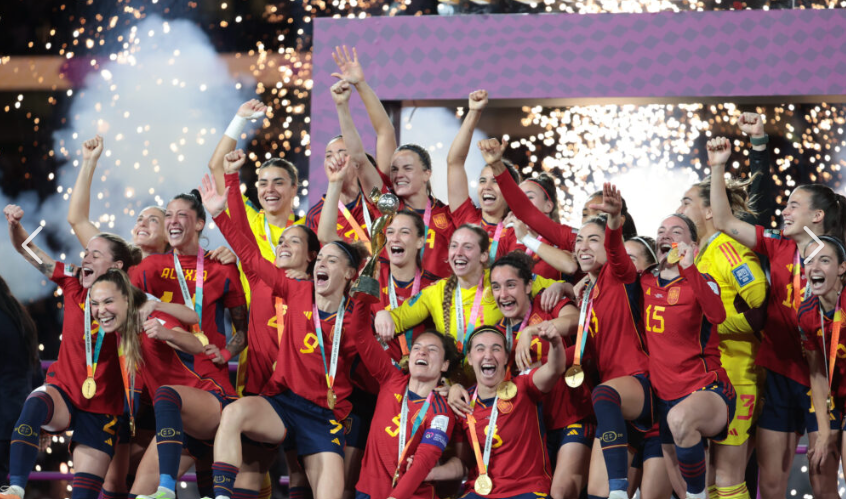


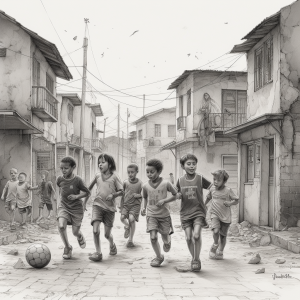
Leave a Reply